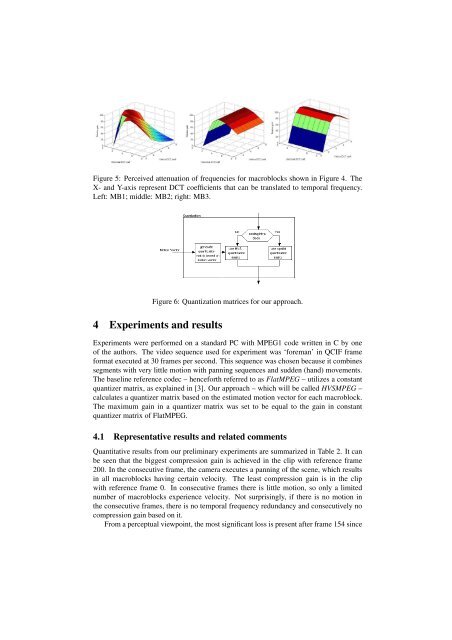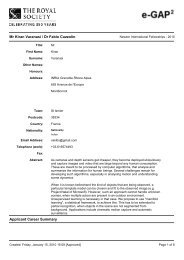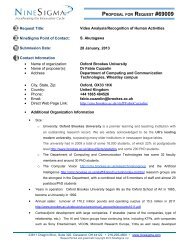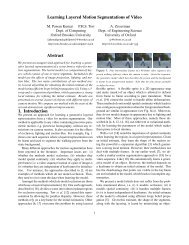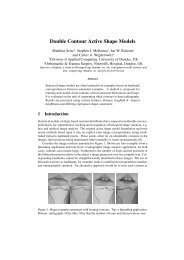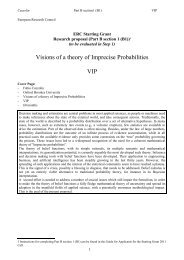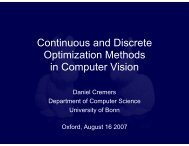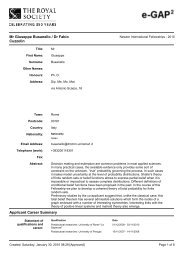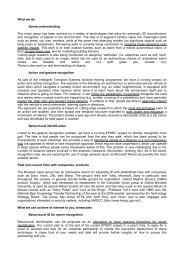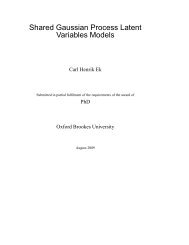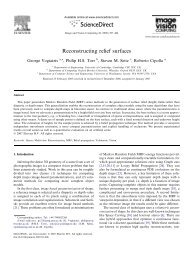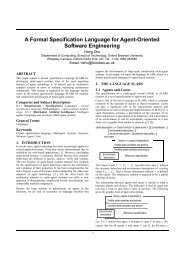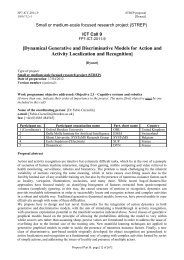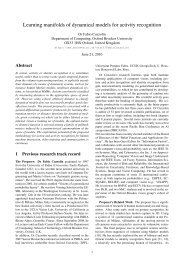Final Copy - Oxford Brookes University
Final Copy - Oxford Brookes University
Final Copy - Oxford Brookes University
You also want an ePaper? Increase the reach of your titles
YUMPU automatically turns print PDFs into web optimized ePapers that Google loves.
Figure 5: Perceived attenuation of frequencies for macroblocks shown in Figure 4. The<br />
X- and Y-axis represent DCT coefficients that can be translated to temporal frequency.<br />
Left: MB1; middle: MB2; right: MB3.<br />
Figure 6: Quantization matrices for our approach.<br />
4 Experiments and results<br />
Experiments were performed on a standard PC with MPEG1 code written in C by one<br />
of the authors. The video sequence used for experiment was ‘foreman’ in QCIF frame<br />
format executed at 30 frames per second. This sequence was chosen because it combines<br />
segments with very little motion with panning sequences and sudden (hand) movements.<br />
The baseline reference codec – henceforth referred to as FlatMPEG – utilizes a constant<br />
quantizer matrix, as explained in [3]. Our approach – which will be called HVSMPEG –<br />
calculates a quantizer matrix based on the estimated motion vector for each macroblock.<br />
The maximum gain in a quantizer matrix was set to be equal to the gain in constant<br />
quantizer matrix of FlatMPEG.<br />
4.1 Representative results and related comments<br />
Quantitative results from our preliminary experiments are summarized in Table 2. It can<br />
be seen that the biggest compression gain is achieved in the clip with reference frame<br />
200. In the consecutive frame, the camera executes a panning of the scene, which results<br />
in all macroblocks having certain velocity. The least compression gain is in the clip<br />
with reference frame 0. In consecutive frames there is little motion, so only a limited<br />
number of macroblocks experience velocity. Not surprisingly, if there is no motion in<br />
the consecutive frames, there is no temporal frequency redundancy and consecutively no<br />
compression gain based on it.<br />
From a perceptual viewpoint, the most significant loss is present after frame 154 since


